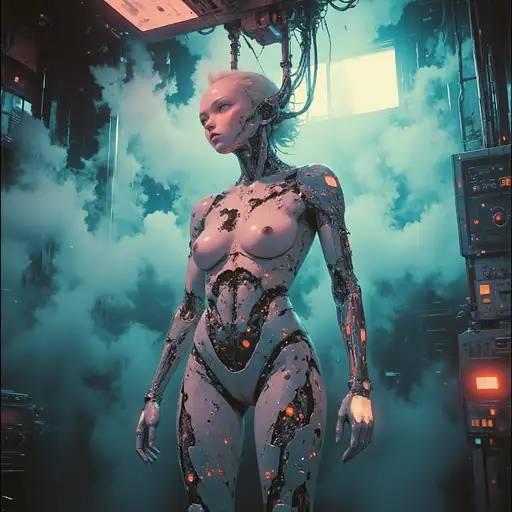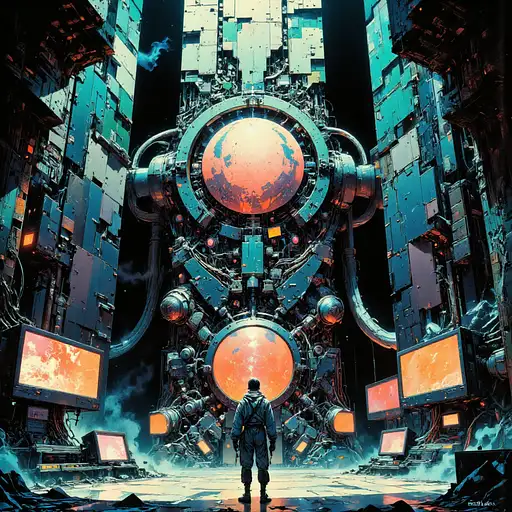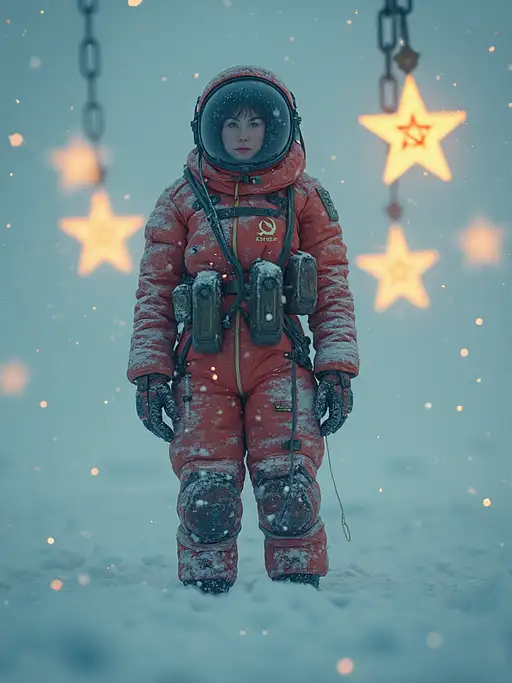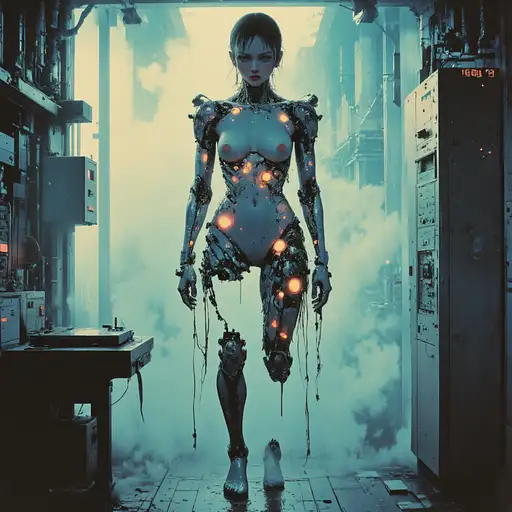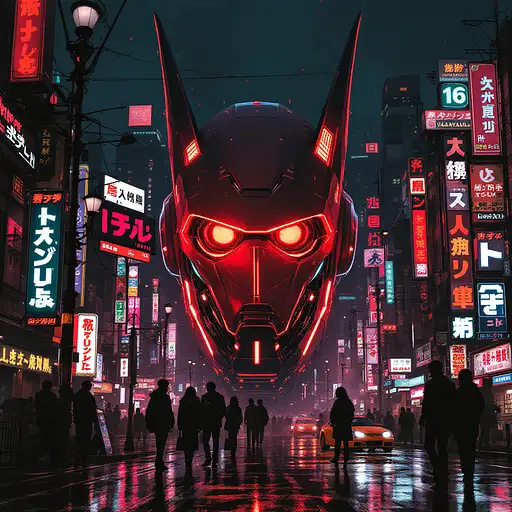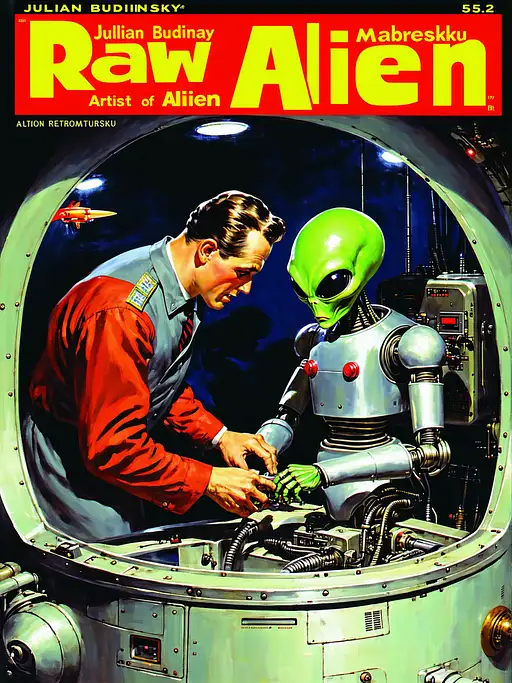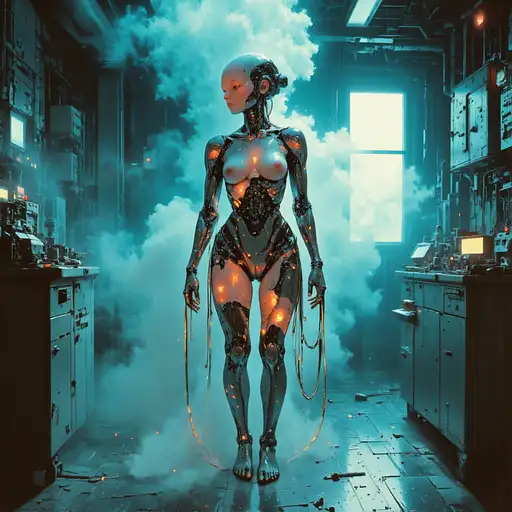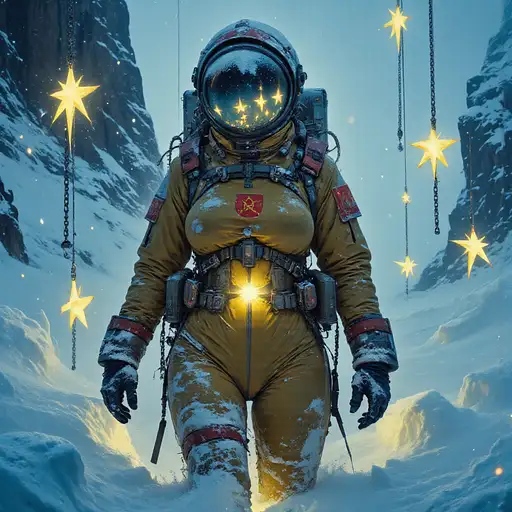
4 months ago
(A hyper-realistic, masterpiece-level color photograph:1.3) of a woman in a Soviet-style retrofuturistic spacesuit (Soviet retrofuturism:1.5) standing in the icy expanse of the Arctic during a fierce blizzard (blizzard in the Arctic:1.4). The woman’s suit, weathered and bulky, bears the clear red insignia of CCCP across the chest (CCCP insignia:1.5), adding to the harsh, militaristic aesthetic of the scene. The spacesuit has a Cold War-era design, with bold red accents and a heavy, utilitarian build, blending the futuristic with the gritty, industrial style of the Soviet Union. Surrounding her, several small, glowing stars float tethered by thick industrial chains (tethered glowing stars in a blizzard:1.4). These stars cut through the blizzard, casting yellow light that glows eerily against the swirling snow. The stars, connected to the icy ground by chains, sway violently in the wind, their light creating dynamic volumetric beams as they fight against the storm. The woman’s helmet visor reflects the glowing stars and the chaos of the blizzard around her, casting intricate patterns of light across her suit, which is half-covered in snow and ice. The volumetric lighting from the stars pierces the thick snowstorm, illuminating the drifting snowflakes and casting long, dramatic shadows across the snowy landscape. The environment is harsh and unforgiving—her spacesuit is covered in frost, and the cold, biting wind whips at her, while snow drifts build up around her legs. The blizzard creates an intense sense of motion, with the snow swirling around in unpredictable patterns, making it feel as though the woman is standing in the heart of a Soviet Arctic research mission gone wrong. Amidst the storm, the CCCP insignia glows faintly under the light of the stars, a symbol of the lost Soviet expedition. The glowing stars and industrial chains are tethered to the icy ground, creating a surreal, otherworldly scene in the middle of this brutal landscape. The scene is a combination of retrofuturistic design and gritty realism, with the harshness of the blizzard contrasting against the surreal glow of the stars. The intense lighting from the stars and the complex shadows they cast against the swirling snow create a dramatic, cinematic atmosphere. The overall mood is cold, brutal, and haunting, capturing a moment of isolation and survival in the Soviet retrofuturistic Arctic wasteland

